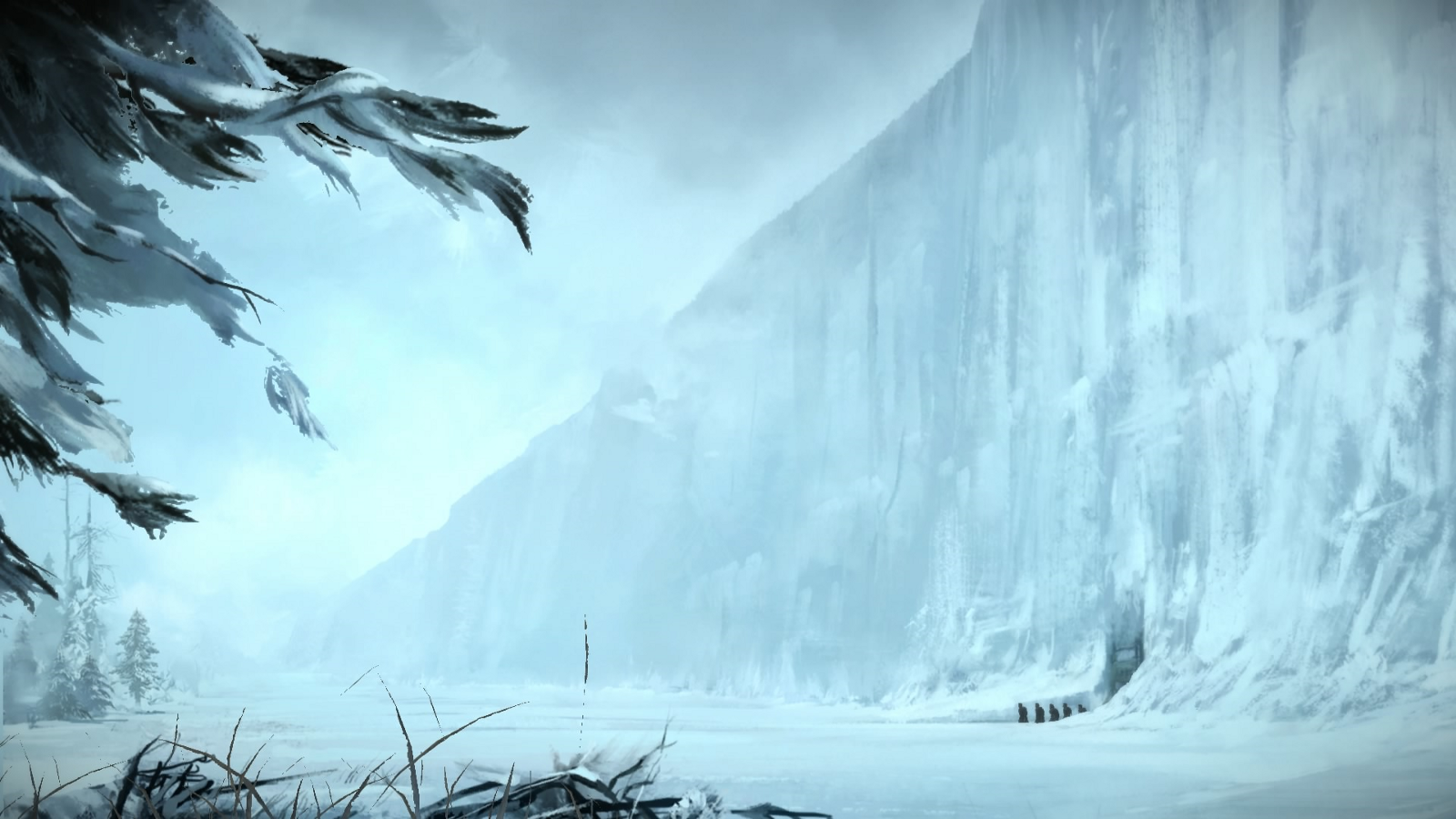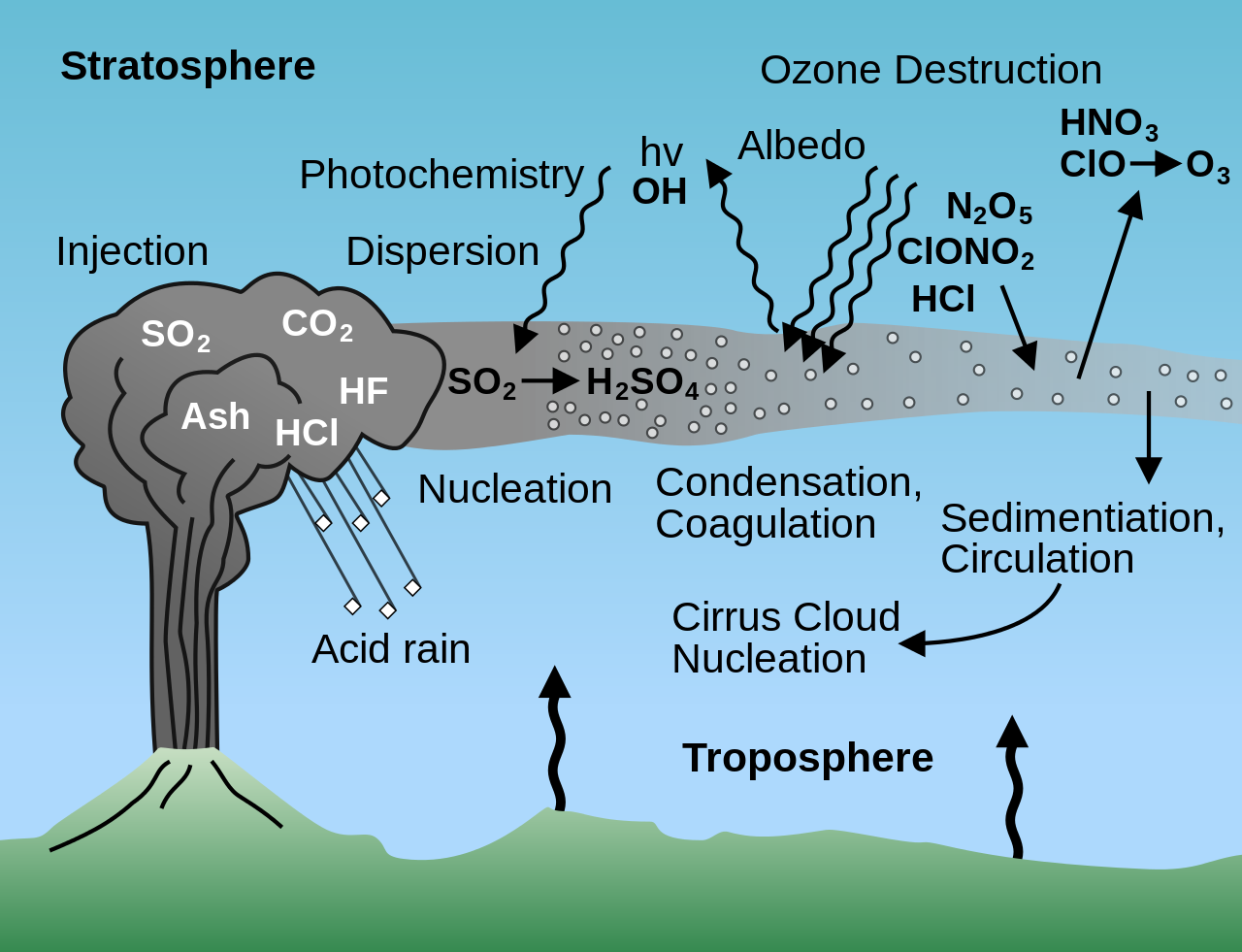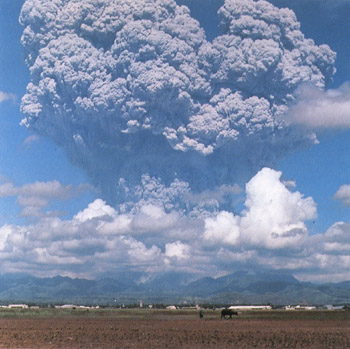
If winter was like anything they said, building the Wall wouldn’t have been any big deal. (c) HBO
It’s been a little while since the Game of Thrones ended, feelings might have calmed…a little, and good memories may have started to creep in and cover up the perhaps no-so-good memories, so let’s go back to Westeros.
One of Game of Thrones’ central plot points was that “winter was coming,” something that started with Ned Stark back in season one, episode one, and became a bigger and bigger threat as the seasons passed. Okay – ultimately, the winter that was foretold fizzled and lost all its oomph as a plot point, but that’s not to say that Westeros hasn’t seen extreme winters in the past. As recounted by characters throughout the series, the winters that come roaring down from north of the Wall could bring feet of snow, winds and sub-freezing temperatures that could last for years. And it was all relatively unpredictable – in other words, not a seasonal shift, or something caused by a regularly recurring event on the planet or something relating to the orbit of Westeros’ planet around its star. It was almost random.
We’re not about to apply hard science to Game of Thrones, but let’s look at a strong contender for what could cause such extreme changes in Westeros’ weather – because it’s done similar things here – volcanoes.
Before we dip into the earth-bound science behind volcanic weather and volcanic winters, it’s not too far out to mention that this is a possibility for Westeros’ winters, since The Doom of Valyria, set four hundred years before the War of the Five Kings was caused when a chain of fourteen volcanoes, the Fourteen Fires, erupted simultaneously. The region is reported to be – at least in the novels – quite active to the present-day of Westeros. Add in a rudimentary understanding of science, and any knowledge kept as carefully guarded treasure by the Maesters, and you’ve got a setup for superstition and unpredictability surrounding winters among the common folk.
But that’s all fantasy, and even George R.R. Martin has said that one day, he’ll explain it, but it will have a fantasy explanation, not a science-based one. That’s all well and good, but let’s look at the effects volcanism can have on a climate – particularly ours – and let’s pull some climate scientists in as well.
How Bad Could it Be?
Throughout recorded history, the earth has seen several volcanic cooling events – sometimes referred to as “volcanic winters,” ranging in their severity from mild to severe. Regarding pop culture, perhaps the most famous of these occurred in 1815 when Mount Tambora in Indonesia erupted just before sundown on April 5th. Locally, thousands were killed as a result of the blast, and tens of thousands died of aftereffects in the following months.
Globally, effects of the blast – which was four times larger than Krakatoa (set to shake the earth later that century, in 1883) were responsible for disrupting monsoon patterns in India (contributing to the development of a new strain of cholera), causing crop failures and resultant famines in China, Western Europe and New England, which led to food riots and mass emigration of refugees.
A year later, the Tambora aftereffects were still holding on to such an extent that 1816 was known in Europe as the “Year Without a Summer.” It was during that cool summer that Mary Shelley – perhaps partly influenced by the dreary weather wrote Frankenstein. After all, Shelley herself described the season as “…a wet, ungenial summer, and incessant rain often confined us for days to the house.”
While the 1816 eruption of Tambora is perhaps the episode of volcanic cooling that echoes the loudest in history and popular culture, it’s by no means the only one. Earth has seen dozens of volcanic events over the millennia extreme enough to affect the climate, which then can have devastating effects on humans, from famines and disease, to the falls of major civilizations, perhaps including Constantinople in 1453, resulting from climate and weather effects resulting from the eruption of Kuwae in the Pacific. The effects of Kuwae also resulted in “nonstop snow” measuring several feet or more causing tens of thousands of deaths in Ming Dynasty China.
And if, for example, you lived in the Ming Dynasty in 1453, you would have no way of predicting the change in the climate – you would only know (and pass along to your descendants) just that winter came and would not leave.

Volcanic sulfur dioxide does a real number on the atmosphere.
Bring in the Science
When volcanoes erupt, they can release a lot of stuff – ash, lava, smoke, and other chemicals. And while it’s easy to say that volcanoes belch out enough…stuff to block the sun and cause a change in the climate, the dark clouds of ash and particulates affect the weather, not the climate. Climate is long-term and on a large scale, weather is shorter-term.
Of the materials spewed out by volcanoes, chemical compounds that contain the element sulfur play the largest role in affecting the planet’s climate. To be specific, when sulfur-rich compounds, are blasted into the stratosphere (the layer above the troposphere, which is what’s directly over us) they will, over a timescale of months, react with water vapor to form sulfur aerosols. These form a whitish haze high up in the sky. These chemicals, now mostly sulfuric acid droplets increase the albedo or reflectivity of the planet and as a result, act to lower the overall incoming energy from the sun. Less energy coming into the planet, ultimately, less heat.
The actual chemistry behind sulfur dioxide combining with atmospheric oxygen and then water in the atmosphere looks something like this:

Sulfur dioxide is more effective than ash or other particulate matter from volcanoes in blocking sunlight since all but the smallest particles of ash will fall out of the sky eventually. Sulfuric aerosols can remain in the stratosphere for months or even – if enough volume gets blasted into the sky by the volcano – years. During these years, the droplets can spread to cover the entire earth, causing a global cooling effect, or can develop in a heavier concentration over a region, resulting in a more localized cooling effect. Eventually, the droplets collect enough water and become heavy enough that they fall back to the surface.
Just to be clear – volcanoes are the only things pumping sulfur dioxide into the atmosphere, humans do it too, thanks to inefficient burning of fossil fuels and the smelting of metal ores to produce aluminum, copper, zinc, lead, and iron. But two things about human-produced sulfur dioxide: 1) it doesn’t go as high as that coming from volcanoes, and 2) volcanoes produce a lot – a lot – more than we do.
As a result of not getting up into the stratosphere, human-created sulfur aerosols can be washed out of the atmosphere by rain (rain happens below the stratosphere), and contribute to acid rain on the surface. The day-to-day fluctuations in atmospheric sulfur dioxide concentration is all us, not volcanoes.
Case in point for the volcano side of this – the 1991 eruption of Mount Pinatubo in the Philippines. That eruption pushed more than 20 million tons of sulfur dioxide into the stratosphere. As expected – and predicted by climatologists – the SO2 formed sulfate aerosols which remained in the upper atmosphere for years. As a result of their presence, the earth’s average temperature dipped by about 0.6°C for roughly two years following the eruption.
On earth, large, climate-altering eruptions such as Pinatubo happen about every decade or so, although we haven’t seen anything on the scale of Pinatubo since its eruption, and certainly nothing like Tambora or Krakatoa before it anytime this century. Even North America’s own eruption of Mount St. Helens in 1980 only put 1.5 million tons of sulfur dioxide into the atmosphere, causing only negligible climate change.
But it is a mechanism which, given a strong enough volcano, or continued, strong eruptions could have an overall, cooling effect on the planet. Yeah, I know what you’re thinking. More on that in a minute.

“Winter fizzled, and don’t even get me started on my death scene…” – an unnamed final season critic (c) HBO
Back to Westeros
Okay, okay – yes, George R.R. Martin has consistently taken a bemused attitude towards those who try to figure out the science behind his world infused with dragons and magic and has even said that the reason for an unpredictable, returning winter is magic-based. But that said, could volcanic cooling explain the unpredictable winters that plague that world?
A chain of extremely strong volcanoes like the remains of the Fourteen Fires, with, say, regular but unpredictable activity? Or maybe a vast, undiscovered volcanically active region somewhere “east of Westeros?” Certainly. As we’ve seen in our own world (but in the opposite direction) a slight change in a planet’s average temperature is enough to cause vast climate change. Take the average temperature down instead of up (as we’re doing), and you would see vast changes throughout the entire climate. Weather patterns would change, ocean currents would be disrupted due to surface water cooling and sinking. The disrupted currents and reduced heat would further alter the climate – and not in a good way.
And these possible climate changes would begin shortly after the volcanic activity began, and, as with the Pinatubo eruption, would continue for some time after. Years? Decades?
Perhaps.
And that’s to say nothing of the upheaval such a climate change would cause when it comes to governments and society. During our own “Little Ice Age” (the larger period from 1300-1870) when the climate dipped by just 0.6°C, the Ottoman Empire took to their horses and expanded their territory in order to find more resources, the Spanish moved against the Dutch (who were riding out the change pretty well), migrations were fairly common, and there were many instances of regional rule collapse as people went hungry due to climate changes. You could easily argue that our world’s geopolitical landscape was reshaped during those years due to many reasons, one of them clearly being climate change.
And Westeros?
Personally, I want to see “GoT: Winter in Westeros” as a sequel. The fragile new alliance established in the series finale? Yeah – add in mass, climate-caused migrations, starving people (there are likely no full silos in King’s Landing after Daenerys’ fateful ride).
So yeah – climate change caused by volcanoes? Certainly possible. A good thing? Not in the slightest.
That Thing You Were Thinking About Back There…
And you did think about it. It went something like this, “Wait – if sulfur dioxide in the stratosphere can cool down the planet, why don’t we just take planes loaded with sulfur dioxide up into the stratosphere and dump it? Cool the planet, problem solved, am I right?”

Mt. Pinatubo blows its top. (c) USGS
Well, you’re not…wrong.
Injecting sulfur compounds into the stratosphere is one of the aspects of geoengineering that was once a way-out fringe of science, but has been moving more towards the mainstream. Small scale, some researchers suggest dumping a load of sulfur-containing compounds over the Arctic, for instance, and watch the sea ice reform and the Greenland ice sheet stop melting and flowing into the ocean. Larger scale, find the right altitude, and just go for it – dump as much as we can, and bring the average temperature of the planet down.
But there are three words that are baked into this whole idea: we don’t know. Yes, sulfur dioxide, when shot into the stratosphere by volcanoes has a cooling effect on the earth. That’s a natural thing. When we do it…maybe there won’t be unintended consequences?
By putting sulfur dioxide into the upper atmosphere, we’re playing with a complex and dynamic system that even today, our most powerful computers can barely simulate – or keep up with. Case in point – Pinatubo’s eruption appeared to have some kind of effect on the ozone layer, which we just got done fixing through the entire planet working together for the greater good (although China has fallen off the wagon, apparently). Also – cool the planet, and precipitation decreases. That would need to be balanced – or somehow accounted for.
And there’s the idea of putting something in the atmosphere that is always going to be a tough sell to the powers that would finally say yes. And there’s a limited scientific literacy in the United States and around the world. Putting sulfur dioxide into the stratosphere would not play well with the chemtrail crowd.
Not to mention, once we start…when do we stop? Do we call the plan off midway through if another ruling party comes to power, party based on the idea that stratospheric sulfur aerosols are bad?
Or play the other side of the argument – so injecting sulfur aerosols into the stratosphere will cool the planet. Where’s the incentive to change behavior? Why wean ourselves off of fossil fuel, or why should China and India slow down on coal-fired power plants if we can just push the “cool” button on a whim?
Oh – and one more thing to thoroughly muddle the issue: we’re already doing this geoengineering, albeit on a small scale. Ocean-going cargo ships put out a billion tons of carbon dioxide a year, but also pump out sulfur-containing compounds. And they’ve been doing it for about 100 years. The net effect of these emissions (as well as sulfur compound releases from power plants, significantly in China) has been an overall cooling effect on the planet. Overall, estimates of the cooling range from 0.25 to 0.5°C.
We’ve polluted our planet to the point that it’s warming rapidly, but some of that pollution appears to be cooling our planet as well.
And some of that, at least, has to go away. By 2020, international shipping vessels will have to significantly reduce their sulfur emissions, either by changing fuels to those with lower sulfur content or by scrubbing their exhaust of sulfur compounds. The overall effect of the reduction depends on many things, but the consensus of climatologists appears to be shifting towards the notion that reducing sulfur emissions from ships will have a net warming effect on the climate.
While it’s a thing in Westeros, winter is certainly not coming here.

Oh, like we were going to post this without an image of Jon Snow… (c) HBO







